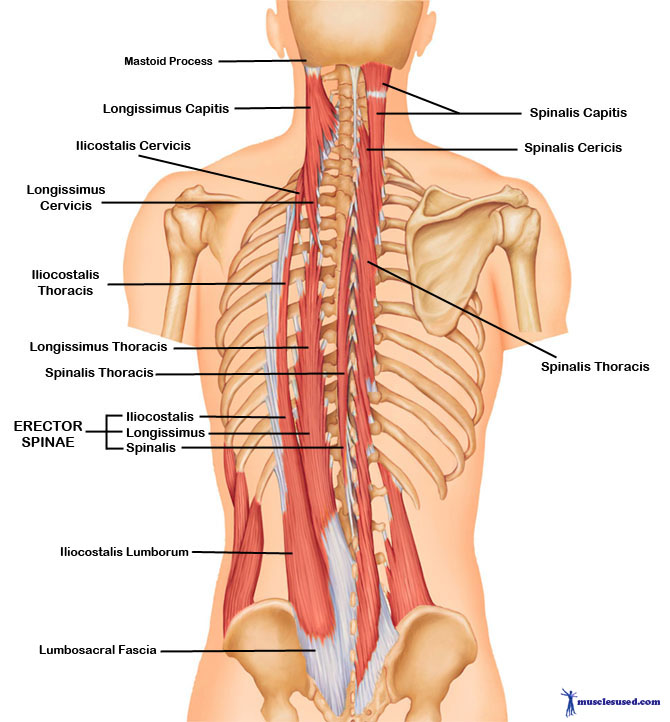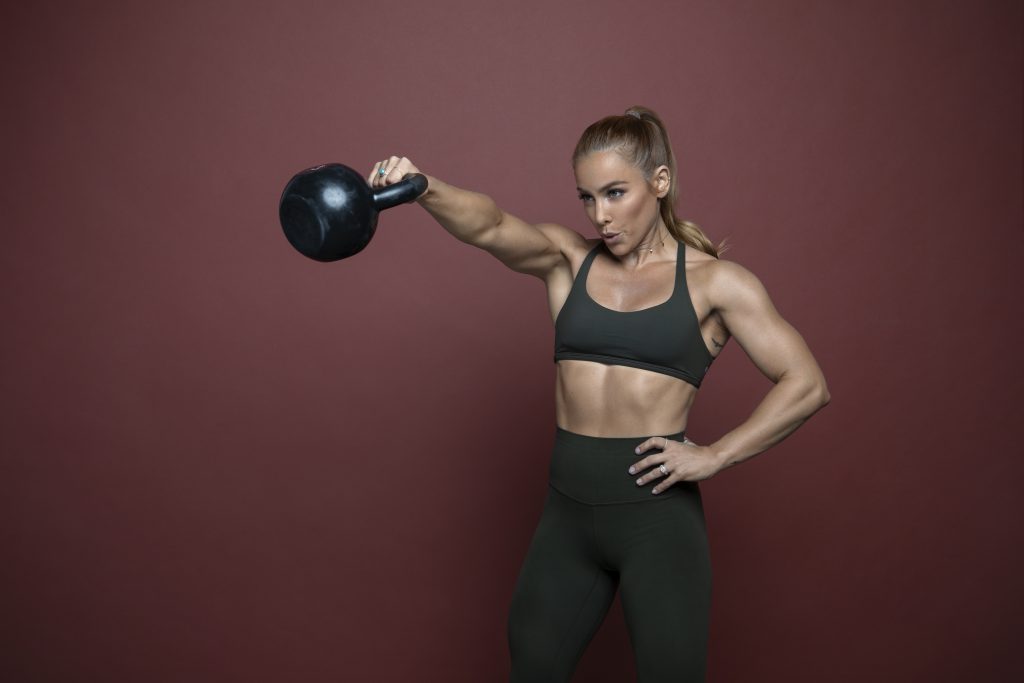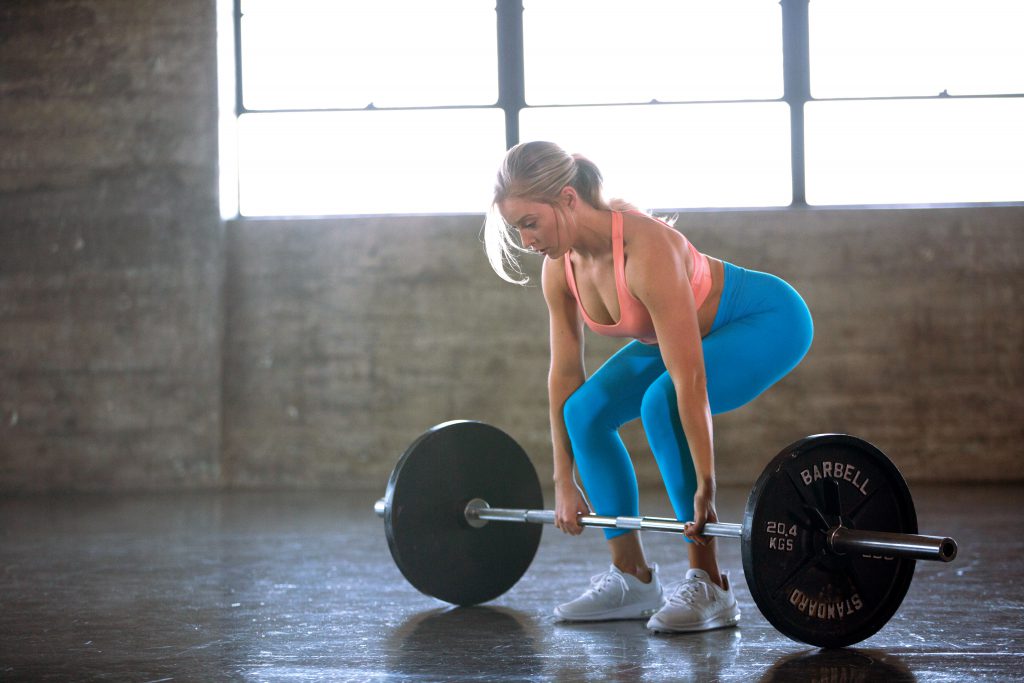Back workouts should take up one full day of your weekly fitness routine. The main purpose of your back muscles is to stabilize, support, and move your spine. Some important back muscles such as the trapezius and latissimus dorsi attach to the shoulder joint, making them imperative for upper body movement. If you want big biceps, you have to start with the back.
Beyond bodybuilding aesthetics, muscle building in your back will help prevent injury and chronic conditions later in life. Studies show that back pain is strongly associated with exactly the kind of back muscle degeneration that back workouts help prevent.
So, since back workouts are so important, which ones should you add to your weekly routine? We’ve outlined some of the best back exercises for building muscle mass so you can look huge, move better, and stave off muscle degeneration in old age. Read on for the best and most effective back exercises and make sure you add them to your fitness regimen.
(Note: Want our elite trainers to help you tone and strengthen your back? Start your Fitplan free trial today!)
Key Back Muscle Groups
Before we get into what back exercises are most effective, let’s take a look at what muscles and muscle groups are back there to get some idea of how different exercises target different muscles.
Anatomy has divided the back muscles into three groups: the superficial, the intermediate, and the deep muscles.
- Superficial back muscles help move the shoulder. Muscles in this group include the rhomboids, levator scapulae, latissimus dorsi, and trapezoids.
- Intermediate back muscles help move the rib cage. Two muscles called the serratus posterior superior and the serratus posterior inferior.
- Deep back muscles help move the vertebral column and maintain posture. There are three muscles in the deep muscle group: the semispinalis, multifidus, and rotatores.
If you’ve only heard of the superficial back muscles, you’re not alone. There’s a reason we talk about lat exercises and getting swole traps – there’s more of them, they’re much bigger, and they’re easier to target with exercises.

Organization of Back Muscles
We call the superficial muscles by that name because they’re closer to the surface of the skin. Because of this, you can actually feel, for example, your trapezoids and lats if you stretch in certain ways.
The traps and lats are the most superficial. The trapezius muscle lies over the levator scapulae and rhomboids. You’ll see us talk about traps and lats more often throughout this article because they’re the ones people can see. If you want your back to look ripped, you have to target your traps and lats.
Back Muscles and the Rest of the Body
Your back muscles aren’t isolated – they have a huge impact on the rest of the body as well.
It’s a two-way street. The rest of the body can also affect the back muscles. For instance, people with tight hamstrings often experience low back pain as a result, while low back pain stemming from other causes can lead to tight hamstrings.
Helpful Hint: Loosen up those tight hamstrings with our 10 Pack Hamstrings Fitplan!
The Erector Spinae: What It Is, What It Does
While you’re working out the two most superficial muscles, the lats and traps, make sure you also target your erector spinae. You don’t have to do it on the same day, but you should target your erector spinae once a week.
Ok, fine, you might be saying, but what is the erector spinae? It’s a group of muscles and tendons that are attached to the spine. They run from your lower back all the way up to the base of your skull.
Fine enough, so how do we target the erector spinae? The three main muscles of the erector spinae are called the spinalis, longissimus, and the iliocostalis.
The erector spinae form part of your core muscles.You can target them with certain exercises, such as deadlifts, rack pulls, good mornings, bent over rows, and back extensions. If you want to improve your posture and your ability to squat and lift with heavier weights.
(Note: You can download the Fitplan App for free on Google Play!)
How Do Back Muscles Get Weak?
Unfortunately, since most of us spend so much time chained to a desk, sitting in a car, or hunched over a computer, we’re already at a disadvantage when it comes to back strength.
Bad posture begets bad posture and weaker back muscles. This can lead to many negative health effects and impact your range of motion, ultimately limiting your strength training among other things.
Luckily, it’s never too late to correct bad posture. Exercise is one of the best and most effective ways to do so.
Stress is another factor. It can cause your back muscles to tighten up and lead to more problems in the posterior chain like tight hamstrings or calves. Here’s some more good news, though: exercise is scientifically proven to lift your mood and reduce stress levels. You’re killing two birds with one stone with these back exercises.
5 Common Back Exercise Mistakes
We tend to see similar mistakes repeated over and over when people do these back exercises. It’s not that the moves themselves are complicated, but rather that these are by and large compound movements that involve many (and sometimes all) of the body’s various muscle groups.
That much muscle activation makes it hard to concentrate on all aspects of an exercise at one time. Keep a few of these back day no-no’s in mind to get the most out of your back workout.
Lifting Too Much
We all get a little crazy when we walk into the gym. The general bustle and the sound of weight plates and barbells just makes you want to grab the nearest object and bench press it into oblivion.
That’s the worst thing you can do for your back. Heavy loads can cause back problems by themselves, but taking on too much can also cause you to lift with bad form. There’s a huge risk of injury with really heavy weights.
Take it slow, especially if this is your first time with these exercises. Resist the urge to impress fellow gym-goers with your superhuman strength and lift what you can.
Lifting With Bad Form
This is especially apparent with compound exercises like pull-ups and deadlifts. Although the movements involved are relatively straightforward, there are several stages you need to go through to do them the right way. Many people fudge the process a little bit or else have been misinformed about how to do things the right way.
Your spine is one of the places where a wrong move can quickly lead to pain. It may only be mild discomfort, but even a pinched nerve can prevent you from walking easily. Such injuries also have a negative circular effect on your workout routine since you might not be able to do exercises with the right form if you have a limiting injury.
Lifting Too Fast
That same adrenaline rush that makes us want to lift whole buildings also tends to make us move more quickly. It could be a runner’s high after some cardio or a continuation of a high-energy HIIT routine, but when the heart rate is elevated we just move through reps faster.
When you rush, you make mistakes. Even if you can do dumbbell flyes without issue, if you sprint through them you risk overextending your shoulder joint, which can cause serious and possibly permanent injury.
The back and spine are designed to be load-bearing. You wouldn’t race a cement truck in the Indy 500 and you shouldn’t rush through your back exercises, either.
Helpful Hint: Shred fat and get a good upper body workout with our Power Shred Fitplan!
Lifting Without a Warm-Up
Even if you lift a proper amount of weight with the proper form and don’t rush, exercise can still lead to injury for muscles that aren’t primed for it. Whether it’s a stretching routine or some bodyweight exercises, it’s critical to warm-up.
This golden rule is especially true for the back muscles. While the muscle groups in your wrists, arms, and legs are primed from daily activity, the same might not be true of your back muscles.
You need to be more intentional with your back muscles than you are with muscles elsewhere in the body. They aren’t worked out unintentionally as often as other muscle groups and it’s very likely your back muscles have been slouched and inactive for much of the day. Wake them up with a warm-up.
Lifting for Muscle Failure
Sometimes lifting until your muscles are completely exhausted is a great idea. You can do it with leg exercises or you can do it with compound exercises that will wear out different muscle groups.
However, when it comes to the back muscles, you don’t want them to fail. It can cause your posture to be terrible during recovery time and even make it hard to balance.
You still have to cause muscle damage if you want to activate hypertrophy to get bigger muscles, but you can get a strong back without completely shutting down your back muscles.
The 7 Best Back Workouts for Mass
Use some of these exercises to get ripped traps and lats. Since most of them are compound exercises, you can also use them to get higher peaks and a stronger core.

1. Kettlebell Swings
Less complicated than the other moves in this guide that will follow, kettlebell swings are great for back training because they activate your whole posterior chain. As long as you have a kettlebell, you can do this move anywhere.
How to Do Kettlebell Swings:Stand with your feet shoulder-width apart and the kettlebell just in front of you on the floor. Lean over with a flat back and take the kettlebell in both hands. Then lift it so that it’s between your legs. Use your lats to pull the weight between your legs, then explode forward with your hips to drive the kettlebell back forward. Get it up to shoulder height and repeat without stopping.
2. Lat Pulldowns
Nothing targets the lats like lat pulldowns. There are many variations to keep things fresh and they’ll give you chiseled wings in your upper back.
As with any exercise that engages the shoulder joint, you have to be mindful not to go too fast with lat pulldowns. Aggravated and fast-paced movement can easily lead to rotator cuff injury.
How to Do Lat Pulldowns:Sit down facing the machine and put the cushion over your legs to prevent them from getting involved. Use a wide-grip overhand to get more muscle activation in your lats.
Lean back slightly and keep your core engaged. Your spine should be neutral. Inhale before you start and exhale as you pull the overhead bar down to your chest. When it gets to your chin, slowly return it to the starting position.
To get more of a workout, insert an isometric pause just after the top of the movement. Keep strain on your lats by not letting the weight plate all the way back down before starting another rep.
3. Seated Cable Row
Another workout that requires a cable machine, the seated cable row gives some great muscle activation in your back and it will give your forearms a workout, too.
The mid-back is given the hardest workout during seated cable rows, particularly the latissimus dorsi. Just remember to keep an eye on your posture during this exercise because a rounded back can undermine its effectiveness.
How to Do a Seated Cable Row:Sit at the machine and sit with your feet flat on the floor and your back straight but your spine neutral. Engage your abs and legs to stabilize the rest of your body during this exercise.
Grip the handle and pull it toward your chest, taking care not to let your torso move. Concentrate on pulling with your shoulder blades. Return the handle to the starting position and once again don’t let the weight plate all the way down so that your muscles stay under strain throughout the move.
Helpful Hint: Learn more about machine-based exercises with our Gym Active Fitplan!
4. One-Arm Dumbbell Rows
While it might appear to be a bicep exercise, one-arm dumbbell rows also activate the lats and traps, which are actually doing all the work.
Unlike our first two moves, you can do this one at home or anywhere else you have access to a bench, or an incline bench, and a dumbbell. They’re more effective back exercises than barbell rows because they allow you to really target your back muscles.
How to Do One-Arm Dumbbell Rows: You’re going to have your shin on the bench. Whichever hand you plan to start with, place the opposite leg on the bench and grab the far side of the bench with your free hand.
Take the dumbbell in your active hand with your palm facing you. Hold it with your arm fully extended and your back straight. This is the starting position.
Bring the weight to your chest so that your elbow moves into a 90° angle. Slowly lower back to the starting position. Complete your reps on one side before switching to the other.
5. T-Bar Row
For some real back muscle gain that doesn’t need anything besides basic weight training equipment, try a T-Bar Row with a barbell.
You’ll get a great arm workout while getting the bulk of the muscle activation in your back.
How to Do a T-Bar Row:Load weight on one side of the barbell only. Straddle the bar with your feet more than shoulder-width apart. Grip the barbell with both hands and hold it with your arms fully extended. You should be lowered with your butt out almost like you’re about to go into a squat position.
Lift the weighted end of the barbell to your chest and engage your shoulder blades at the top of the movement.
6. Pull-Ups
One of the best compound exercises for a bigger back is the pull-up. It activates your core, triceps, shoulders, forearms, and back muscles all at once. It’s also a great chest workout.
Target your back muscles with a wide overhand grip. A close grip will restrict your range of motion, but too wide and you’ll put too much strain on your shoulder joint. An underhand grip technically transforms a pull-up into a chin-up.
How to Do a Wide-Grip Pull-Up:Stand underneath the pull-up bar and grab it with both hands, thumbs pointed toward each other. Get into a dead hang with your feet off the ground.
While looking straight ahead, engage your shoulder blades and lift yourself by pulling through your elbows. Your head should go above the bar. Slowly lower back into the starting position.
If you dare, try an isometric pause or lower yourself in increments. Just be prepared for a much lower rep range if you add those variants.

7. Barbell Deadlift
The deadlift might be the best compound exercise there is. It activates just about every muscle group in the body and it’s sure to give you a stronger back and that V-taper you’ve always wanted.
Learning to deadlift is never over. There are so many varieties that you could well keep doing them for years without getting bored. Completing a barbell deadlift also gives you a huge sense of accomplishment.
How to Do Barbell Deadlifts:Stand with the barbell over the middle of your foot with your feet shoulder-width apart. Bend over to take the barbell in both hands. Lift the barbell until you hear it clink against the weights. Lift just enough to engage your muscles without lifting.
Then, lift the barbell in stages. First, bring it to your shins, then to your thighs. Bend your knees in the first interval and then straighten up your back. You can drop the bar or slowly return it to the starting position, depending on gym rules.
Helpful Hint: Round out your V-taper with our Complete Physique Fitplan!
Conclusion:
Working your back muscles isn’t just a vanity exercise to get that ideal V-taper. It’s also crucial for avoiding injury and preventing muscle degeneration with age. Use these 7 back workouts to sculpt your back, improve your posture, and keep your body in great shape so you can destroy the rest of your fitness routine.
(Note: Want our elite, celebrity trainers to give you a full body workout? Start your Fitplan free trial today!)


